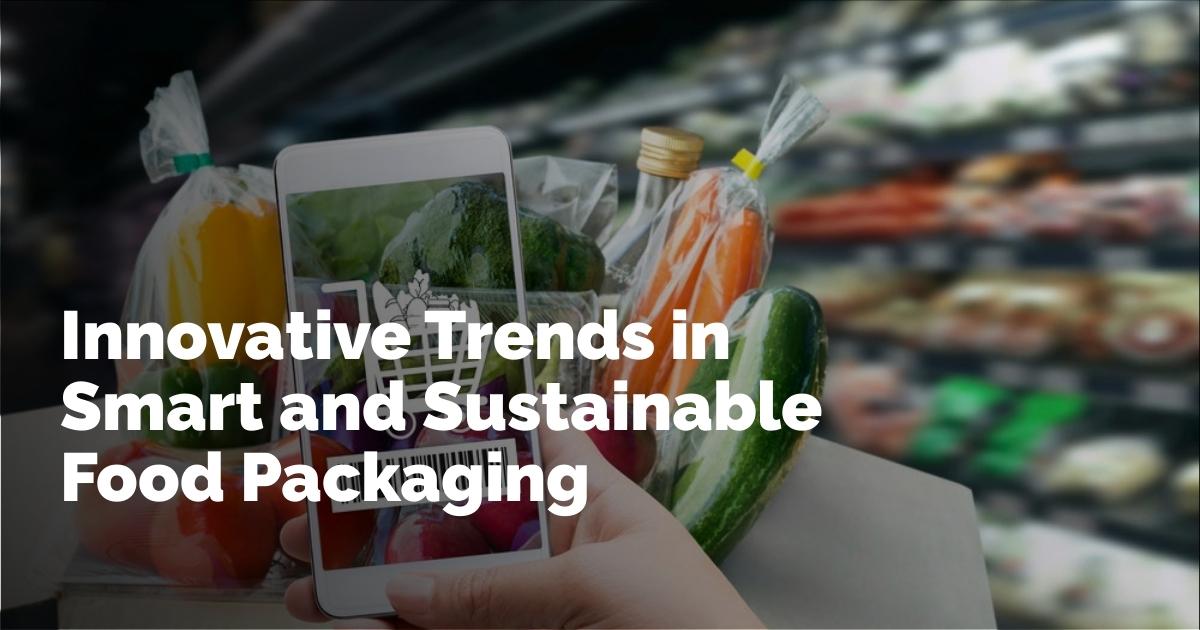Smart and Sustainable Food Packaging: A New Era in Innovation
In an era marked by heightened environmental awareness and complex global supply chains, the food packaging industry is undergoing a profound transformation. Innovations in packaging not only aim to cut waste and improve food safety but also strive to meet the increasing demand for sustainability. From biodegradable materials to intelligent systems that enhance transparency, these advancements revolutionize how we protect, store, and transport our food. This evolution is addressing some of the most critical global issues—reducing plastic waste, extending food shelf life, and ensuring safety—all while aligning with modern consumer expectations.
Environmentally Sustainable Packaging: The Rise of Biodegradable Solutions
The growing consciousness of environmental issues is pushing brands and researchers towards sustainable packaging solutions. The movement towards biodegradable and compostable materials highlights not just a technological shift but also a broader cultural awakening to the impact of packaging on our planet and health. Traditional plastic has been a staple in packaging due to its cost-effectiveness and durability. However, its non-biodegradable nature poses serious environmental risks. This challenge has sparked a wave of research aimed at developing sustainable materials that offer the necessary functionality while minimizing the environmental footprint.
Bioplastics, derived from renewable resources like corn starch, sugarcane, or algae, are at the forefront of these developments. Polylactic acid (PLA), a widely used bioplastic, provides a compostable alternative suitable for various packaging needs, though it requires industrial composting facilities to decompose fully. Nonetheless, PLA represents a significant step away from petrochemical-based plastics.
Edible packaging is another pioneering concept gaining traction. Crafted from materials such as seaweed, rice starch, or milk protein (casein), these packaging solutions are not only biodegradable but also safe for consumption. Companies like Notpla and Evoware lead the charge, with seaweed-based films designed for products like sauces and dry snacks. Additionally, plant fibre-based alternatives such as mushroom mycelium, bamboo, or sugarcane bagasse offer compostable options for items like trays, cups, and wraps associated with ready meals and takeaways.
The push for sustainability also includes incorporating recycled content into packaging. Post-consumer recycled (PCR) plastics, when safely processed and certified for food contact, help divert waste from landfills and decrease the demand for virgin materials.
Smart Packaging: Enhancing Safety and Transparency
Intelligent or smart packaging is revolutionizing food safety and supply chain transparency. These innovative solutions integrate embedded technologies to monitor and convey information about the condition of products throughout their supply chain journey. A key development in this area is time-temperature indicators (TTIs). These sensors or labels change color based on a product's temperature history, offering visual cues to ensure that the cold chain—crucial for perishables like dairy, meat, and seafood—was maintained.
Gas sensors and freshness indicators push this innovation further by detecting gases associated with spoilage, such as ammonia or hydrogen sulfide. These tools, when integrated into packaging, reduce food waste by providing a more accurate assessment of freshness compared to standard "use by" dates. Moreover, the rise of QR codes and RFID tags is enhancing traceability. By scanning a code, consumers gain access to detailed information about the product's origin, handling, and nutritional benefits, bolstering trust and improving recall efficiency.
These advanced systems can even interact with smartphone apps, allowing users to track a product's farm-to-table journey. Such transparency aligns with the growing consumer interest in ethical sourcing and food safety, especially amidst global supply chain disruptions.
Designing Packaging for Waste Reduction and Circularity
How packaging is designed plays a critical role in sustainability. Current innovation focuses on minimizing waste throughout a product's lifecycle, from production to disposal. Minimal packaging—achieving protection with less material—is a rising trend. Advanced barrier technologies allow the use of thinner films while ensuring product freshness and hygiene.
Mono-material packaging, comprising a single type of plastic, offers a path to improved recyclability. Unlike multi-layer laminates that are difficult to recycle due to mixed materials, mono-materials can be more easily processed at recycling facilities. Polyethylene (PE) and polypropylene (PP) are common choices for such flexible packaging formats.
Emphasizing reusability, brands are exploring refillable containers and closed-loop systems where consumers return or refill packaging, reminiscent of traditional milk delivery models. Modern adaptations involve partnerships between brands and zero-waste stores.
Innovative structural designs, like collapsible pouches, resealable packs, and portion-controlled containers, contribute to waste reduction by enhancing convenience and preventing overconsumption and spoilage.
Looking to the Future
The evolution of food packaging exemplifies how innovation can address multiple global challenges simultaneously. Sustainable materials, intelligent monitoring, and waste-reducing designs are reshaping the food industry for the benefit of both people and the planet. Nonetheless, challenges remain, including the scaling of novel material production and ensuring affordability. However, ongoing research and growing consumer demand indicate that the momentum will persist.
As governments tighten regulations on single-use plastics and carbon emissions, responsible packaging solutions will become essential rather than optional. The most successful food packaging of the future will not only preserve taste and freshness but also embody values of transparency, sustainability, and circularity.
As innovation spearheads this transformation, the humble food package is poised to become a key player in building a healthier, more sustainable future.
출처 : Original Source

